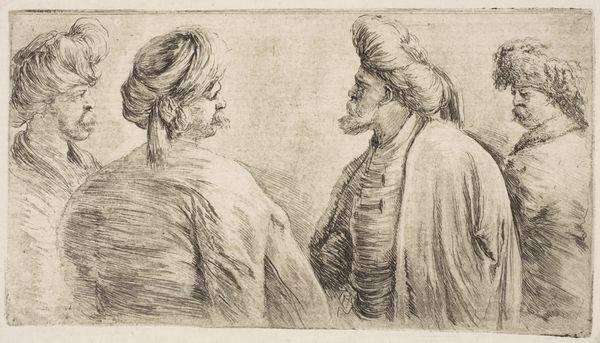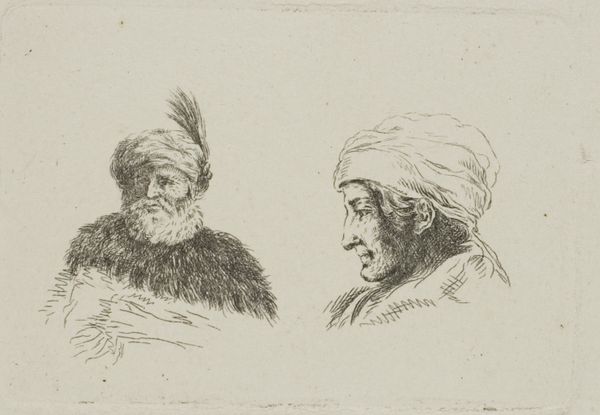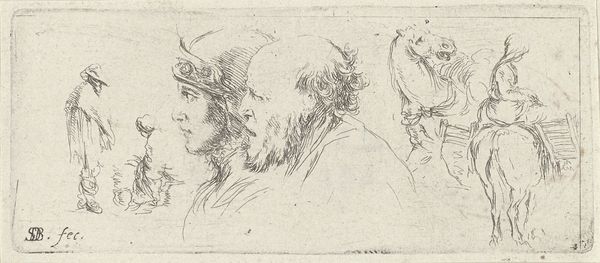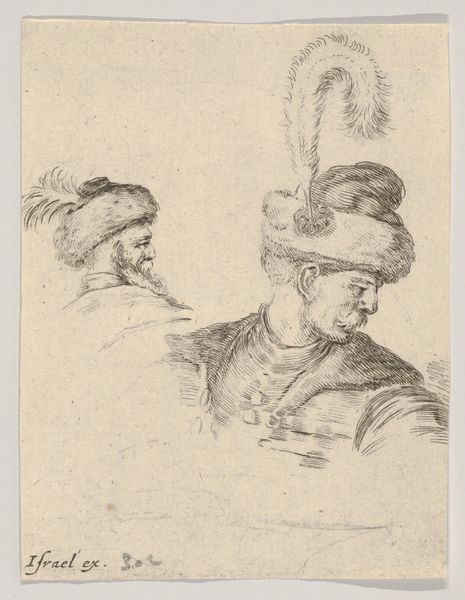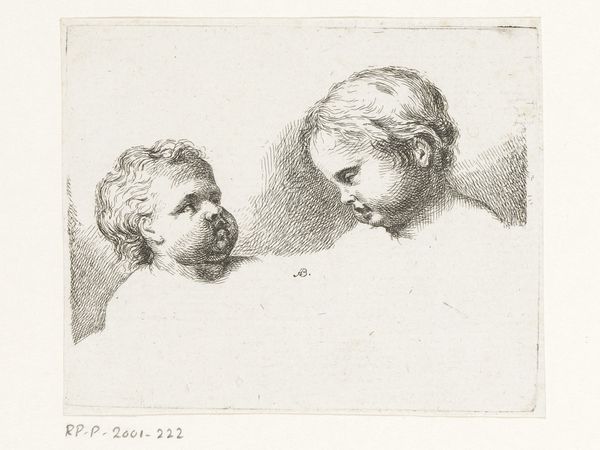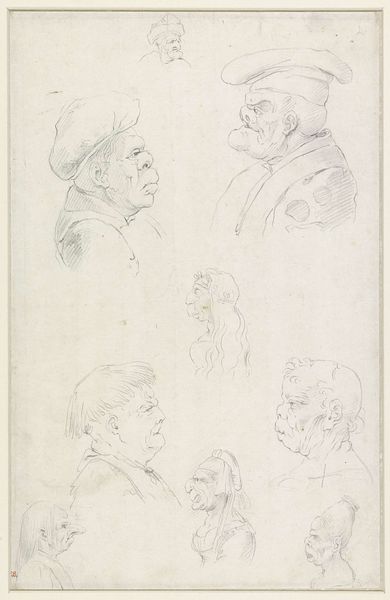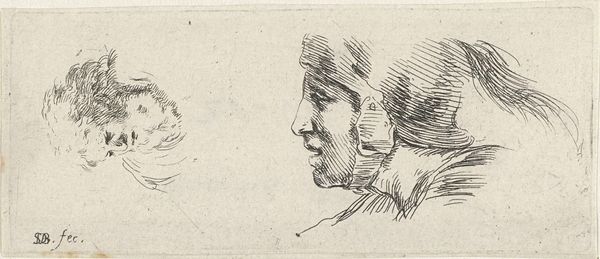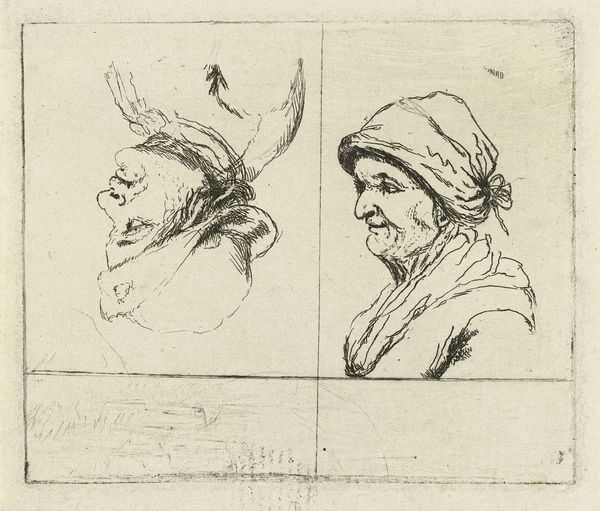
drawing, print, pencil
#
portrait
#
pencil drawn
#
drawing
#
neoclacissism
# print
#
pencil sketch
#
charcoal drawing
#
figuration
#
form
#
pencil drawing
#
pencil
#
line
#
portrait drawing
#
academic-art
#
profile
Dimensions: Sheet (trimmed): 3 7/8 × 6 7/8 in. (9.8 × 17.4 cm)
Copyright: Public Domain
Curator: Jean Jacques de Boissieu created this drawing, titled "Study of Four Heads," around 1770. The piece currently resides at the Metropolitan Museum of Art. It’s rendered primarily in pencil and embodies neoclassical aesthetics. What's your immediate take on this, looking at it? Editor: Well, they strike me as being caught in very different moods. The young woman looks almost wistful, her gaze downcast, while the older man, rugged in his fur cap, has this air of… well, maybe weary wisdom. Like they're reflecting on different phases of life, side by side. Curator: I agree. It’s fascinating how de Boissieu captures those distinct psychological states. We have the contrast between youth and age, definitely, but also perhaps an exploration of societal expectations imposed on gender during the late 18th century. Editor: Exactly! He’s playing with these social expectations. It feels intentional, doesn't it? The detail he puts into the man's weathered face – every line etched with experience – compared to the smoother, softer depiction of the woman. She’s all innocence and he's, like, lived it all. Curator: Yes, the execution emphasizes a common theme of that era, too. Neoclassicism valued order and reason, and portraiture was used to project an idealized, yet informative representation of the sitter. This work makes a compelling contribution to considerations of gender dynamics within those established conventions. Editor: What’s cool, though, is he does it with this incredible economy of line. It’s not overly fussy. Each mark seems considered. There's a lightness, almost a breath to the piece, that keeps it from being just another formal exercise. It doesn't try too hard, does it? Curator: And if you examine his wider body of work, one can appreciate how he subtly subverts some neoclassical ideals through careful manipulations of tone and expression. He engages with prevalent cultural norms while simultaneously leaving space for critical reflection, especially in his figural works. Editor: So, looking at it overall, the drawing feels both incredibly of its time and strangely…timeless. I feel like that wistful, world-weary dynamic is forever relevant. It reminds you to make time for reflection in our modern context. What about you? Curator: It’s a reminder that art can function as a complex site of cultural inscription and resistance, allowing us to look critically at inherited narratives about identity, power, and representation.
Comments
No comments
Be the first to comment and join the conversation on the ultimate creative platform.

